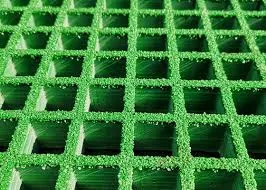
-
 Afrikaans
Afrikaans -
 Albanian
Albanian -
 Amharic
Amharic -
 Arabic
Arabic -
 Armenian
Armenian -
 Azerbaijani
Azerbaijani -
 Basque
Basque -
 Belarusian
Belarusian -
 Bengali
Bengali -
 Bosnian
Bosnian -
 Bulgarian
Bulgarian -
 Catalan
Catalan -
 Cebuano
Cebuano -
 China
China -
 China (Taiwan)
China (Taiwan) -
 Corsican
Corsican -
 Croatian
Croatian -
 Czech
Czech -
 Danish
Danish -
 Dutch
Dutch -
 English
English -
 Esperanto
Esperanto -
 Estonian
Estonian -
 Finnish
Finnish -
 French
French -
 Frisian
Frisian -
 Galician
Galician -
 Georgian
Georgian -
 German
German -
 Greek
Greek -
 Gujarati
Gujarati -
 Haitian Creole
Haitian Creole -
 hausa
hausa -
 hawaiian
hawaiian -
 Hebrew
Hebrew -
 Hindi
Hindi -
 Miao
Miao -
 Hungarian
Hungarian -
 Icelandic
Icelandic -
 igbo
igbo -
 Indonesian
Indonesian -
 irish
irish -
 Italian
Italian -
 Japanese
Japanese -
 Javanese
Javanese -
 Kannada
Kannada -
 kazakh
kazakh -
 Khmer
Khmer -
 Rwandese
Rwandese -
 Korean
Korean -
 Kurdish
Kurdish -
 Kyrgyz
Kyrgyz -
 Lao
Lao -
 Latin
Latin -
 Latvian
Latvian -
 Lithuanian
Lithuanian -
 Luxembourgish
Luxembourgish -
 Macedonian
Macedonian -
 Malgashi
Malgashi -
 Malay
Malay -
 Malayalam
Malayalam -
 Maltese
Maltese -
 Maori
Maori -
 Marathi
Marathi -
 Mongolian
Mongolian -
 Myanmar
Myanmar -
 Nepali
Nepali -
 Norwegian
Norwegian -
 Norwegian
Norwegian -
 Occitan
Occitan -
 Pashto
Pashto -
 Persian
Persian -
 Polish
Polish -
 Portuguese
Portuguese -
 Punjabi
Punjabi -
 Romanian
Romanian -
 Russian
Russian -
 Samoan
Samoan -
 Scottish Gaelic
Scottish Gaelic -
 Serbian
Serbian -
 Sesotho
Sesotho -
 Shona
Shona -
 Sindhi
Sindhi -
 Sinhala
Sinhala -
 Slovak
Slovak -
 Slovenian
Slovenian -
 Somali
Somali -
 Spanish
Spanish -
 Sundanese
Sundanese -
 Swahili
Swahili -
 Swedish
Swedish -
 Tagalog
Tagalog -
 Tajik
Tajik -
 Tamil
Tamil -
 Tatar
Tatar -
 Telugu
Telugu -
 Thai
Thai -
 Turkish
Turkish -
 Turkmen
Turkmen -
 Ukrainian
Ukrainian -
 Urdu
Urdu -
 Uighur
Uighur -
 Uzbek
Uzbek -
 Vietnamese
Vietnamese -
 Welsh
Welsh -
 Bantu
Bantu -
 Yiddish
Yiddish -
 Yoruba
Yoruba -
 Zulu
Zulu
grp shell
Understanding GRP Shells An Overview
GRP, or Glass Reinforced Plastic, is a composite material widely used in various industries due to its lightweight nature, durability, and resistance to corrosion. Among the various applications of GRP, GRP shells have gained significant popularity for their versatility and performance characteristics. This article aims to provide a comprehensive overview of GRP shells, including their properties, applications, and advantages.
What is GRP?
Glass Reinforced Plastic (GRP) consists of a polymer matrix reinforced with glass fibers. The combination of these materials results in a composite that exhibits high strength-to-weight ratios, making it ideal for numerous applications. GRP can be molded into various shapes and is available in different formulations depending on the required strength, flexibility, and durability.
Properties of GRP Shells
GRP shells possess several outstanding properties that make them a preferred choice in various applications
1. Lightweight GRP shells are significantly lighter than traditional materials such as steel or concrete. This characteristic makes them easier to transport and install, reducing labor costs and increasing efficiency.
2. Corrosion Resistance One of the standout features of GRP is its resistance to various environmental factors, particularly moisture, chemicals, and UV radiation. This makes GRP shells suitable for outdoor applications and environments where exposure to harsh chemicals is a concern.
3. Durability GRP shells are known for their durability. They can withstand impacts and are less prone to wear and tear compared to other materials. This longevity translates into lower maintenance costs over time.
4. Thermal and Acoustic Insulation GRP has excellent insulation properties, helping to maintain temperature stability and reduce noise levels in various applications. This feature is particularly valuable in construction and automotive sectors.
5. Aesthetic Flexibility GRP can be molded into complex shapes and designed in various colors, offering aesthetic appeal without compromising functionality.
Applications of GRP Shells
grp shell

Given their remarkable properties, GRP shells are utilized across numerous industries
- Construction GRP shells are often used in the construction of roofing panels, wall cladding, and various structural components due to their lightweight and insulating properties.
- Automotive Industry Many vehicles incorporate GRP for body panels and internal components, capitalizing on its lightweight nature to improve fuel efficiency.
- Marine Applications Due to their resistance to water and corrosion, GRP shells are widely used in the construction of boats, ships, and other marine structures.
- Industrial Equipment GRP is utilized in producing storage tanks, pipes, and chemical processing equipment, where resistance to corrosion is critical.
- Consumer Products From bicycles to garden furniture, GRP shells are employed in creating durable and lightweight consumer goods.
Advantages of GRP Shells
The benefits of using GRP shells extend beyond their inherent properties. One of the primary advantages is cost-effectiveness. Although the initial investment might be slightly higher than conventional materials, the long-term savings due to their durability and low maintenance make them an attractive option.
Additionally, the production of GRP shells can be tailored to meet specific requirements, including high performance under challenging environmental conditions, thus ensuring that the end product fits the intended application perfectly.
Conclusion
In summary, GRP shells are a remarkable composite solution that combines strength, durability, and versatility. Their applications span multiple industries, proving their value in modern manufacturing and construction processes. As technology continues to advance, we can expect the use of GRP shells to increase, driving innovation and efficiency across various sectors.









